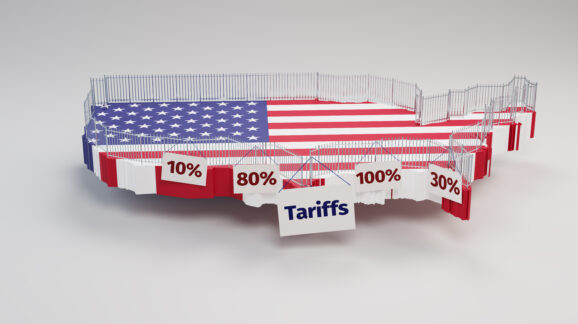America’s tariff-induced isolation grows

Photo Credit: Getty
Few other nations or trading blocs can announce tariffs on the whim of one man, as President Trump claims the power to do (although the International Trade Court has found otherwise). For instance, the World Trade Organization, of which the US is still a member, requires that members charge each other the same tariff. Other countries also have regulatory hurdles to jump over to ensure a fair process that takes all appropriate factors into account.
The European Union, itself a protectionist trade bloc, is perhaps one of the slowest to operate. Yet it is now clear that most member states favor using the EU’s “big bazooka” on trade, the Anti-Coercion Instrument, in response to US trade policy. This legislative tool, which was ironically designed to counter trade pressure from China, allows for ten types of countermeasures once an investigation determines that the other party is engaging in “economic coercion” (which is the avowed purpose of US tariff policy – to force change in how other countries treat trade).
These tools are:
- Custom duties
- Import/export restrictions
- Trade restrictions
- Restrictions on participation in public procurement
- Services restrictions
- Restrictions on foreign direct investment
- Restrictions on protection of intellectual property rights from the other party
- Restrictions on financial services
- Restrictions on chemical goods
- Restrictions on sanitary and phytosanitary goods such as agricultural products
To be sure, use of this instrument would devastate American business interests in Europe, affecting the export of services andgoods, as well as upending financial arrangements and investment. The total annual trade in goods and services between the two parties is just shy of $1.9 trillion. The EU would be badly hit by this breakdown of commercial relationships as well, but it seems EU member nations have decided that is a price worth paying.
As Transatlantic trade fractures, we can see other signs of increasing isolation of the US from the world trading system. Mexico and Canada have agreed terms for a new trade “corridor” that bypasses the US. Japan’s ruling party lost its majority in the country’s upper house at least partly due to the US imposition of 25 percent tariffs (President Trump called Japan “spoiled”) and may be exploring alternative trade structures, such as a closer alliance with the EU. Details of the trade deal announced overnight are still lacking, but while it appears better than it did a couple of weeks ago, it may still cost the Japanese PM his job–a warning to other leaders.
Elsewhere in Asia, far from helping in the struggle with China for economic dominance, US trade policy is pushing Southeast Asian nations to pursue closer relationships with China. This is the continuation of a process a colleague and I warned against during the last administration.
While this growing isolation may seem like a victory for the America First movement, it could not come at a worse time for certain vital developments. For instance, President Trump is expected to announce an “AI Action Plan” soon with a substantial international component:
The plan would also seek to push back against Chinese influence in international standards-setting bodies and multilateral organizations. Officials have long argued that failing to counter Beijing’s sway in these forums could tilt international norms toward authoritarian models of technology governance and give China a leg up in military innovations.
It is hard to seek allies at these international fora when the main tool of US diplomacy, trade policy, is so hostile to otherwise friendly nations. I have written elsewhere about how trade can be a vital tool in persuading developing world nations to side with the US. That tool was blown up on “Liberation Day.”
If America is looking for allies in these vital areas, perhaps it should think again about its short-sighted trade policy.